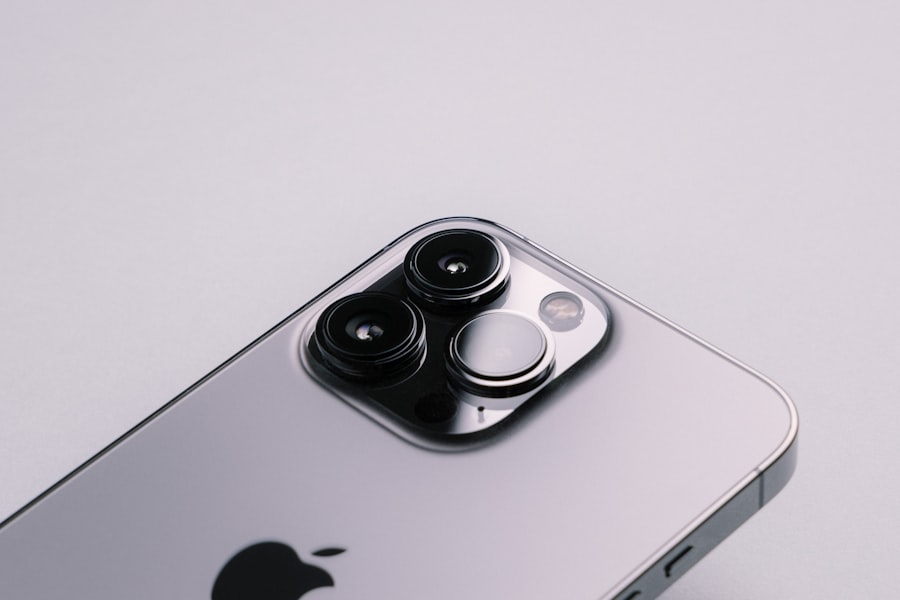As technology continues to evolve at a rapid pace, many users find themselves grappling with the signs of wear and tear on their devices. One of the most common indicators that a device is nearing the end of its useful life is physical damage. Scratches on the screen, dents on the casing, or a battery that no longer holds a charge can all signal that it may be time for an upgrade.
For instance, a smartphone with a cracked screen not only detracts from the user experience but can also lead to further complications, such as internal damage or exposure to moisture. Users often overlook these signs until they become significant issues, leading to costly repairs or complete device failure. In addition to physical damage, performance issues are another clear sign that a device may be past its prime.
Sluggish response times, frequent crashes, and an inability to run newer applications can frustrate users and hinder productivity. For example, a laptop that takes several minutes to boot up or struggles to handle multiple tabs in a web browser can significantly impact daily tasks. These performance-related issues often stem from outdated hardware that cannot keep pace with modern software demands.
As applications become more resource-intensive, older devices may struggle to deliver the seamless experience users expect, prompting many to consider an upgrade.
Key Takeaways
- Signs of Wear and Tear: Look for physical damage, slow performance, and battery issues as signs that your device may need an upgrade.
- New Features and Technology: Consider the latest advancements in technology such as improved processors, better cameras, and enhanced security features.
- Compatibility with New Apps and Software: Ensure that your new device is compatible with the latest apps and software to avoid any limitations.
- Battery Life and Performance: Look for devices with longer battery life and improved performance to enhance your user experience.
- Camera Quality and Features: Consider the camera resolution, features, and capabilities of the new device for better photography and video recording.
New Features and Technology
The rapid advancement of technology has led to the introduction of innovative features that enhance user experience and functionality. For instance, smartphones now come equipped with advanced biometric security measures such as facial recognition and fingerprint scanning, providing users with both convenience and enhanced security. These features not only streamline the unlocking process but also add an extra layer of protection for sensitive information stored on the device.
Additionally, many new devices incorporate artificial intelligence (AI) capabilities that can learn user preferences and optimize performance accordingly, making everyday tasks more efficient. Moreover, advancements in display technology have transformed how users interact with their devices. High-resolution screens with vibrant colors and improved brightness levels have become standard in newer models, offering an immersive viewing experience for everything from streaming videos to gaming.
For example, OLED technology provides deeper blacks and more vivid colors compared to traditional LCD screens, making content more visually appealing. Furthermore, features such as adaptive refresh rates and HDR support enhance the overall experience by providing smoother motion and greater detail in both bright and dark scenes.
Compatibility with New Apps and Software

As software developers continue to innovate, compatibility with new applications becomes a crucial factor in determining whether to upgrade a device. Many modern applications are designed with the latest operating systems in mind, meaning older devices may struggle to run them effectively or at all. For instance, popular productivity tools like Microsoft Office or creative software like Adobe Creative Cloud often release updates that require more robust hardware capabilities.
Users may find themselves unable to access essential features or updates if their device is not compatible with the latest software versions. Additionally, the rise of cloud-based applications has shifted how users interact with software. Many new apps rely on internet connectivity and cloud storage, which can place additional demands on older devices.
For example, collaborative tools like Google Workspace or project management software may require more processing power and memory than older devices can provide. This incompatibility can hinder productivity and collaboration efforts, prompting users to consider upgrading to a device that can seamlessly integrate with the latest software solutions.
Battery Life and Performance
| Device | Battery Life (hours) | Performance Score |
|---|---|---|
| iPhone 12 | Up to 17 | 90 |
| Samsung Galaxy S21 | Up to 14 | 85 |
| Google Pixel 5 | Up to 24 | 88 |
Battery life is a critical consideration for many users when evaluating whether to upgrade their devices. Over time, batteries naturally degrade, leading to shorter usage times between charges. A smartphone that once lasted all day may now require multiple charges throughout the day, significantly impacting usability.
For instance, if a user finds themselves tethered to a charging cable during their daily commute or while working remotely, it may be time to consider a new device with improved battery technology. Recent advancements in battery technology have led to significant improvements in performance and longevity. Newer devices often feature lithium-ion batteries that not only charge faster but also offer longer lifespans compared to older models.
Additionally, many manufacturers are now incorporating power-saving features into their devices, such as adaptive battery management systems that optimize energy consumption based on user habits. This means that users can enjoy extended usage times without sacrificing performance, making it an attractive option for those considering an upgrade.
Camera Quality and Features
In today’s digital age, camera quality has become a paramount consideration for many consumers when choosing a new device. The evolution of smartphone cameras has been remarkable, with many models now boasting multiple lenses, advanced image processing capabilities, and features such as optical zoom and night mode. For example, flagship smartphones often include wide-angle and telephoto lenses that allow users to capture stunning images in various settings without needing additional equipment.
This versatility appeals not only to casual photographers but also to professionals who rely on their devices for high-quality imagery. Moreover, advancements in computational photography have revolutionized how images are captured and processed. Features like portrait mode, which blurs the background while keeping the subject in focus, have become standard in many new devices.
Additionally, video recording capabilities have improved significantly, with many smartphones now supporting 4K resolution and high frame rates for smooth playback. This enhancement allows users to create professional-quality videos directly from their devices, further emphasizing the importance of camera quality in the decision-making process for potential upgrades.
Storage Capacity

As digital content continues to grow in size and complexity, storage capacity has become an increasingly important factor for consumers considering an upgrade. Many users find themselves running out of space on their devices due to the accumulation of photos, videos, apps, and other files. For instance, a smartphone with limited storage may struggle to accommodate large video files or high-resolution images taken during vacations or special events.
This limitation can lead to frustration as users are forced to delete cherished memories or uninstall apps they rely on. Newer devices often come equipped with significantly larger storage options compared to their predecessors. Many smartphones now offer configurations with up to 512GB or even 1TB of internal storage, allowing users to store vast amounts of data without worrying about running out of space.
Additionally, advancements in cloud storage solutions provide users with the ability to offload data from their devices while still maintaining easy access through internet connectivity. This combination of increased internal storage and cloud options makes upgrading particularly appealing for those who require ample space for their digital lives.
Cost and Budget Considerations
When contemplating an upgrade, cost is often one of the most significant factors influencing consumer decisions. The price of new devices can vary widely based on brand, specifications, and features offered. For example, flagship models from well-known manufacturers may come with premium price tags due to their advanced technology and brand reputation.
However, there are also budget-friendly options available that provide solid performance without breaking the bank. Consumers must weigh their needs against their financial situation when deciding whether an upgrade is worth the investment. Additionally, it is essential for consumers to consider the long-term value of upgrading versus maintaining an older device.
While the initial cost of a new device may be high, the potential savings in terms of improved performance and reduced repair costs can make it a worthwhile investment over time. For instance, a user who frequently experiences issues with an outdated laptop may find that investing in a new model not only enhances productivity but also saves money on repairs and downtime in the long run.
Environmental Impact of Upgrading
The environmental impact of upgrading technology is an increasingly important consideration for consumers today. The production and disposal of electronic devices contribute significantly to environmental degradation through resource extraction, energy consumption during manufacturing processes, and electronic waste (e-waste) generated when devices are discarded. As awareness of these issues grows, many consumers are becoming more conscious of their purchasing decisions and seeking ways to minimize their ecological footprint.
One approach to mitigating environmental impact is through responsible recycling programs offered by many manufacturers and retailers. These programs allow consumers to return old devices for proper recycling or refurbishment rather than sending them to landfills where they can release harmful substances into the environment. Additionally, some companies are focusing on sustainability by using recycled materials in their products or implementing energy-efficient manufacturing processes.
By choosing brands that prioritize environmental responsibility and participating in recycling initiatives, consumers can make informed decisions that align with their values while still enjoying the benefits of upgraded technology.
If you are curious about how old your iPhone is, you may want to check out the article on GetiPhoneInfo. This website provides detailed information about various iPhone models, including their release dates and specifications. By visiting this site, you can easily determine the age of your device and learn more about its history.
FAQs
How can I find out how old my iPhone is?
You can find out how old your iPhone is by going to the “Settings” app, then selecting “General,” and then “About.” The “Model” number will indicate the specific model of your iPhone, and the “Serial Number” will provide information about the manufacturing date.
What does the serial number of my iPhone tell me about its age?
The serial number of your iPhone contains information about the manufacturing date. The fourth and fifth characters of the serial number represent the manufacturing week, and the sixth and seventh characters represent the manufacturing year.
Can I determine the age of my iPhone based on its model number?
Yes, the model number of your iPhone can provide information about its age. Apple’s website provides a list of iPhone models and their corresponding release dates, which can help you determine the age of your iPhone based on its model number.
Is there a way to check the purchase date of my iPhone?
If you purchased your iPhone directly from Apple, you can check the purchase date by logging into your Apple ID account and viewing your purchase history. If you purchased your iPhone from a third-party retailer, you may be able to find the purchase date on the receipt or by contacting the retailer.










